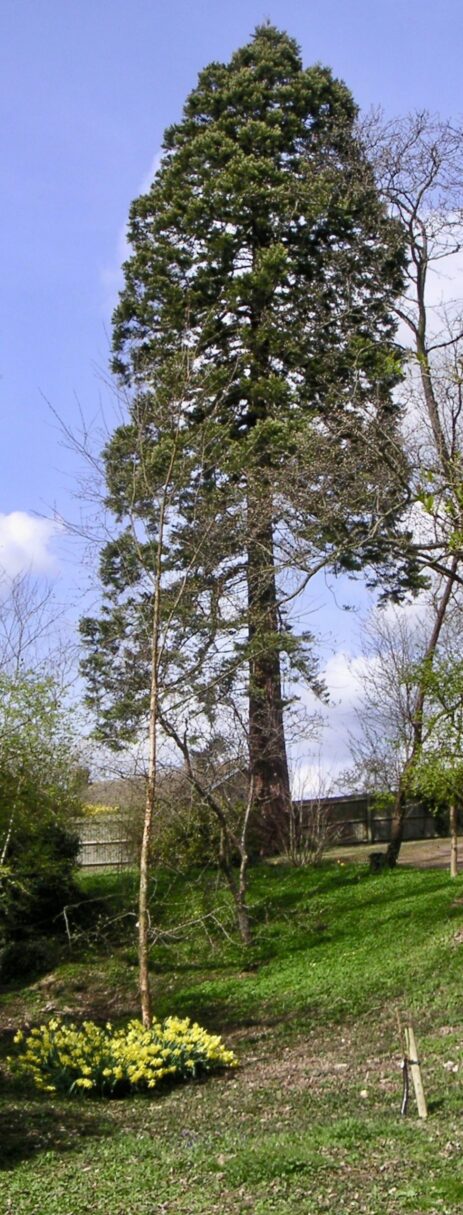#99 WELLINGTONIA
Sequoiadendron giganteum

Planted: 1916
View On MapThis tree is at the eastern end of the Malus Avenue.
| Distribution: | Northern California and western slopes of the Sierra Nevada (aka GIANT SEQUOIA or SIERRA REDWOOD) |
| Planting Date: | 1916 only 0.88 m tall, ‘4 or 5 larger specimens having died off each year’ Supplied by J Cheal and Sons, Lowfield Nurseries, Crawley. |
| Growth Habit: | Dense, dark blue-green spire has swooping up-curving branches. The bole flares at the base. |
| Bark: | Dark red and thickly spongey, bark becomes darker and harder with age; flaking ridges are built up in layers each year allowing the bark to sound hollow when tapped. Lacking the resinous oils of pine, the bark smoulders but does not burn. |
| Leaf: | Sharp radial scales in spirals on cord-like shoots, 4 mm wide, with aniseed scent, and tips that curve outwards. |
| Flowers: | Tiny bright yellow, knob-like, blossoms appear on tips of shoots in February/March and briefly change the colour of the crown from deep green to golden. |
| Fruit: | Male and female egg-shaped cones are carried on the same tree, and can take 2 years to ripen. (Many can remain green and unopened for up to 20 years.) Reddish brown when mature they contain numerous flattened, winged, seeds that are dispersed on the wind after heat from fire has opened the cones. |
| Toxicity: | Unknown |
| Height: | Estimated at 21 m in 2005, potential height 95 m |
| Uses: | Purely decorative, the timber is soft and shatters when felled. |
| Plant Hunter: | Discovered in 1852 as a result of the 1849 goldrush. |
| Introduction Date: | 1853 as seed. |
| Anecdotes and Comments | Known as Wellingtonia to commemorate death of the Duke of Wellington in 1852. ‘Tree of Sequoia’ – Cherokee chief was son of a German trader and Cherokee Indian woman. He created an alphabet for his people and a newspaper was produced in their own language. This helped the cause of the native people who were suffering terribly at the hands of European colonists. |